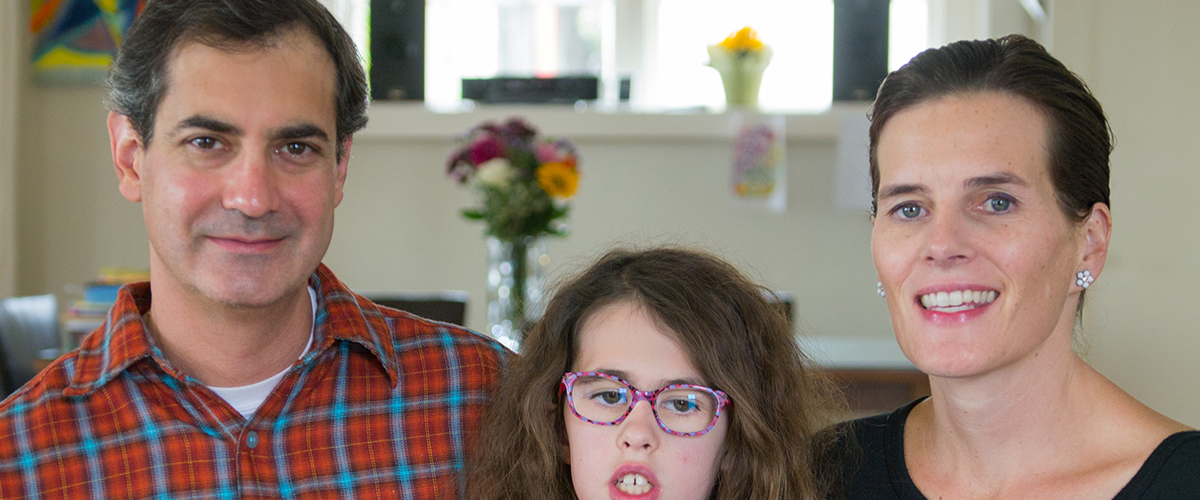MDF SAC Member Profile: Dr. Kathie Bishop
MDF is pleased to welcome Dr. Kathie Bishop, Ph.D., to its Scientific Advisory Committee(SAC). Dr. Bishop, who joined the SAC in summer 2015, is a seasoned expert in neurological and neuromuscular research and drug development.
She received her Ph.D. in neurosciences from the University of Alberta (Canada) in 1997 and then completed a postdoctoral fellowship in molecular neurobiology at the Salk Institute in La Jolla, Calif.
From 2001 to 2009, Dr. Bishop was at Ceregene, a San Diego biotechnology company developing gene therapies for neurological disorders. At Ceregene, where she was Director of Research and Development, she worked on preclinical and clinical programs in Alzheimer’s disease, Parkinson’s disease, Huntington’s disease, retinal degenerations, and amyotrophic lateral sclerosis (ALS).
In 2009, Dr. Bishop moved to Ionis (formerly Isis) Pharmaceuticals in Carlsbad, Calif., a biotech company specializing in antisense oligonucleotide-based therapeutics. While at Ionis, she led programs within the neurology franchise, including leading development for programs for spinal muscular atrophy, amyotrophic lateral sclerosis, type 1 myotonic dystrophy (DM1), and other rare genetic neurological disorders. She left Ionis Pharmaceuticals in 2015, as Vice President of Clinical Development.
She is now Chief Scientific Officer at Tioga Pharmaceuticals, a San Diego biotechnology company developing treatments for chronic pruritus. We talked with Dr. Bishop in October 2015:
MDF: What prompted your decision to move from academia to industry?
KB: I’ve always been interested in genetic neurologic diseases. My original degree was in genetics, and my Ph.D. is in neuroscience. While at the Salk Institute for my postdoctoral fellowship, I worked on development of the brain and spinal cord and found I wanted to apply the science to drug discovery and development.
MDF: What kinds of drug development programs have you worked on?
KB: At Ceregene, we were developing gene therapies for Alzheimer’s disease, Parkinson’s disease, Huntington’s disease, and ALS [amyotrophic lateral sclerosis].
When I moved to Ionis, my first program was developing antisense against SOD1 for ALS. We did a phase 1 clinical trial administering IONIS-SOD1Rx into the CSF [cerebrospinal fluid] in patients with the genetic form of ALS, and no safety issues were found. [See Miller et al., Lancet Neurology, May 2013.] At the time, we were concentrating on whether the CSF delivery of antisense drugs would be feasible and safe, which it was
I led the SMA [spinal muscular atrophy] program at Ionis from the preclinical stage through the phase 1 and phase 2 trials and up to trial design and initiation of phase 3 studies. IONIS-SMNRx acts on the SMN2 gene to change SMN2 splicing so that a functional protein is made. It acts right on the disease mechanism. This antisense [ASO] drug is the same chemistry as IONIS-SOD1Rx, but it doesn’t downregulate the SMN protein the way IONIS-SOD1Rx downregulates the SOD1 protein. The ASO doesn’t have a gap for an enzyme to bind that would downregulate the SMN RNA. It’s now in phase 3 studies in infants and in children with SMA.
I was also involved with developing IONIS-DMPKRx, an ASO against the DMPK RNA to treat type 1 myotonic dystrophy [DM1]. We completed a phase 1, single-dose study in healthy volunteers, and a multiple-dose study in adults with DM1 is ongoing. IONIS-DMPKRx destroys the DMPK RNA, which is thought to be the cause of DM1. It also affects the wild-type DMPK allele, but it may have a preference for the [abnormally expanded] DMPK RNA that’s stuck in the nucleus.
MDF: Do you see other therapeutic avenues for DM?
KB: Yes, absolutely. I think any one therapy, even one which acts on the genetic mechanism in DM, might not work perfectly in longstanding disease and might not work on all aspects of the disease or in all patients. We may need other compounds, such as muscle-enhancing drugs, to supplement it and be taken together with it. We will also need additional drugs that work on other aspects of DM, such as drugs that help stop degeneration in smooth muscle and heart, as well as CNS [central nervous system] drugs. Antisense drugs such as IONIS-DMPKRx do not penetrate into the CNS when given systemically, and particularly in the congenital and juvenile-onset forms of the disease, the CNS effects need treatment.
MDF: What do you see as the main challenges to drug development for DM and other rare disorders? For example, how can small companies meet the demands of patients for expanded access to compounds in development while pursuing full regulatory approval for these compounds?
KB: I think it’s the responsibility of people like me, who work in drug development, and of drug companies to communicate effectively about the development process and the risks involved to patients, their families, and their caregivers. We have to make it clear that experimental treatments could be harmful, and we have to be realistic and honest about the potential benefits. There is a lot of hope, but we also need to communicate better with the patient community about the drug development process.
That said, I would like to see the drug approval process be more efficient and go faster for diseases where the drug has a clear mechanism that acts directly on the underlying genetic cause of the disease. I think the FDA [U.S. Food and Drug Administration] is on board with this, but they aren’t going to come up with solutions. The drug developers have to do that.
MDF: What particular challenges do you see with drug development for DM?
KB: The clinical outcome measures used in this disease change very slowly, so you need long trials to measure decline. We need molecular markers, such as those reflecting splicing changes downstream of the mutant DMPK RNA that are linked to clinical changes. These are known as surrogate markers, and companies have to provide the data on these markers and clinical outcomes to the FDA.
MDF: What particular skills and insights will you bring to the MDF Scientific Advisory Committee?
KB: I plan to advise MDF on DM drug development and on incorporating science into drug development. I hope to help with encouraging and supporting new drug discovery and development programs for treatments for DM, advising on clinical trials, developing surrogate markers in DM, and having an effective working relationship with the FDA.

